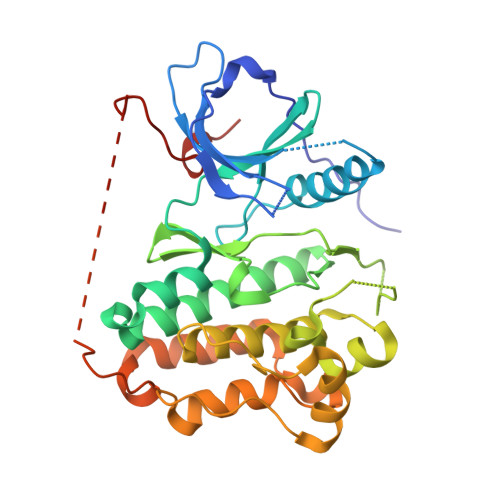Structural Basis for Inhibition of Mutant EGFR with Lazertinib (YH25448).
Heppner, D.E., Wittlinger, F., Beyett, T.S., Shaurova, T., Urul, D.A., Buckley, B., Pham, C.D., Schaeffner, I.K., Yang, B., Ogboo, B.C., May, E.W., Schaefer, E.M., Eck, M.J., Laufer, S.A., Hershberger, P.A.(2022) ACS Med Chem Lett 13: 1856-1863
- PubMed: 36518696
- DOI: https://doi.org/10.1021/acsmedchemlett.2c00213
- Primary Citation of Related Structures:
7UKV, 7UKW - PubMed Abstract:
Lazertinib (YH25448) is a novel third-generation tyrosine kinase inhibitor (TKI) developed as a treatment for EGFR mutant non-small cell lung cancer. To better understand the nature of lazertinib inhibition, we determined crystal structures of lazertinib in complex with both WT and mutant EGFR and compared its binding mode to that of structurally related EGFR TKIs. We observe that lazertinib binds EGFR with a distinctive pyrazole moiety enabling hydrogen bonds and van der Waals interactions facilitated through hydrophilic amine and hydrophobic phenyl groups, respectively. Biochemical assays and cell studies confirm that lazertinib effectively targets EGFR(L858R/T790M) and to a lesser extent HER2. The molecular basis for lazertinib inhibition of EGFR reported here highlights previously unexplored binding interactions leading to improved medicinal chemistry properties compared to clinically approved osimertinib (AZD9291) and offers novel strategies for structure-guided design of tyrosine kinase inhibitors.
- Department of Chemistry, University at Buffalo, The State University of New York, Buffalo, New York 14260, United States.
Organizational Affiliation:

















